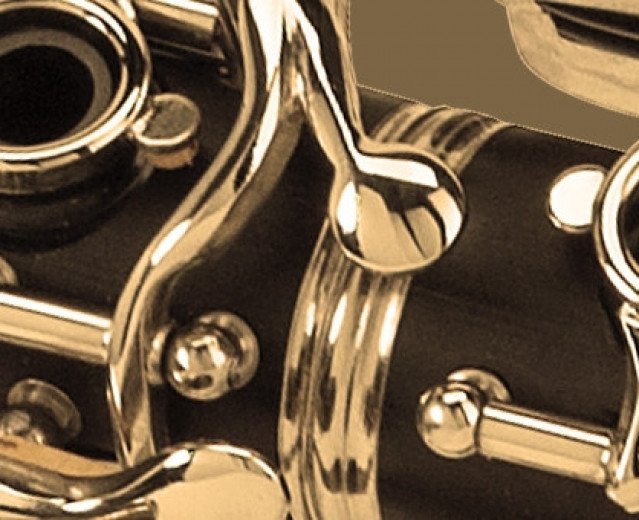The Clarinet has very ancient origins, as this
instruments employs a single-reed principle already found in the Memet, and
Egyptian instrument from 2700 B.C.
The modern Clarinet is a development of the Chalumeau
by Johan Christian Denner, an innovator and craftsman from Nuremberg. The modern
instrument that we all know comes from a long process of improvement made over
the centuries by Jacob Denner (Johan
Christian’s son), Elèonore Klosè, Ivan Muller and Theobald Boehm.
The modern Clarinet is built in five pieces, jointed
by corked tenons.
The components are:
- The mouthpiece (with a ligature used to attach the reed)
- The barrel
- The upper joint
- The lower joint
- The bell
The construction materials
used for the high quality instruments are usually the ebony or the Grenadilla, an
African wood also used by the most famous brand thanks to its density,
workability and dimensional stability, a very important property; less
frequently used – but not less valuable – are woods like the Cocobolo and the
Honduran rosewood.
The clarinets for beginners
are usually made of plastic resin like ebonite, ABS, easy maintainable materials,
perfect for young persons or musicians performing often outdoor.
The note range of the Clarinet
goes from E2 (down to Eb in the Boehm full system) up to C6.
A very versatile instrument, with a wide note range and tone quality that plays an invaluable role in the classic and symphonic orchestra, used by the greates composers of the classic/romantic era until today.
Sounds warm and mellow in the low register, bright in the middle register and really loud and shrill in the higher one. The clarinet is a very important instruments as a soloist in the jazz, swing and BeBop orchestra, thanks to unforgettable compositions by musicians who made the history of jazz like Benny Goodman, Artie Shaw and Tony Scott.
The large family of clarinets is comprised by
instruments of different dimensions and pitch.
Piccolo in Ab, Piccolo in Eb, Piccolo in D, Soprano in C, Soprano in Bb (the most common type), Soprano in A, Soprano in G, basset clarinet in A, Contralto in F (also known as basset horn), Contralto in Eb, Bass Clarinet in Bb; Contrabass clarinet in Eb, Contrabass clarinet in Bb.


